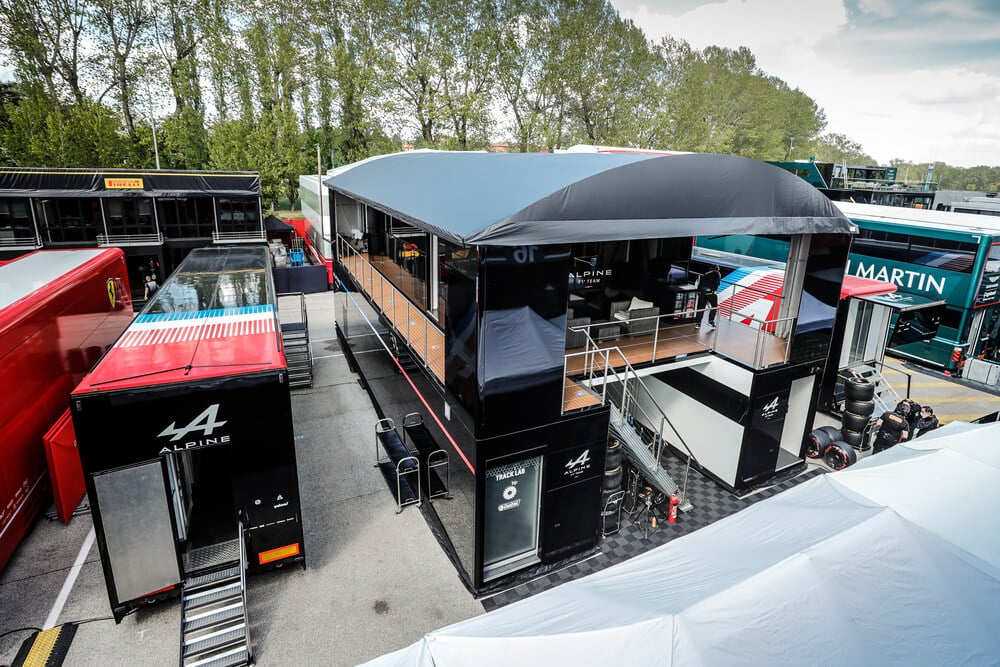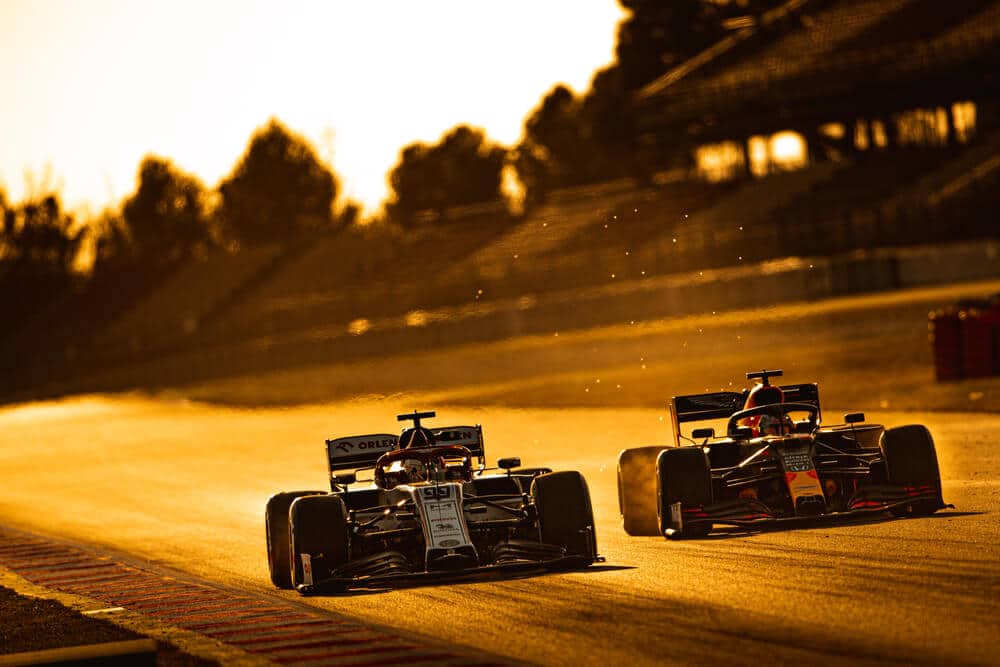In high-speed motorsports like Formula One, safety is of paramount importance. Drivers can reach speeds of over 200 miles per hour, and crashes can be catastrophic. To mitigate the risks of racing, a range of safety measures have been developed, including tire barriers.
These barriers, made from stacks of used tires, are designed to absorb impact and protect drivers in the event of a crash. How effective are they, and what are the limitations of this type of safety barrier? In this article, we will take a closer look at tire barriers in Formula One. We will explore their history, design, and controversies.
We will examine the role of tire barriers in reducing driver fatalities. In this article we will also discuss the potential for future advancements in safety technology. From the challenges of implementing effective safety barriers to the importance of regular maintenance and replacement. We will provide a comprehensive overview of tire barriers in Formula One racing.
Table of Contents
Watch this video to learn more about different safety barriers in F1.
What is a Tire Barrier?
In Formula One, tire barriers are a common type of safety barrier used to protect drivers in the event of a crash. Tire barriers are made up of stacks of old tires, bolted together to form a flexible and energy-absorbing barrier.
They are designed to absorb impact energy, dissipating it throughout the stack of tires. This helps to reduce the severity of a crash. Tire barriers are often positioned at the edge of the track, along the pit lane, or at high-speed corners. This is two places where the risk of a crash is greater.
How Tire Barrier works
When a car collides with a tire barrier, the energy of the impact is absorbed by the tire stack. The tires are designed to compress and deform on impact. This helps to slow the car down and reduce the force of the collision. As the tires compress, they spread the impact energy across the entire stack, dissipating it and reducing the chance of injury to the driver.
The flexibility of the tire barrier also helps to reduce the risk of the car bouncing back onto the track after a crash. Tire barriers are typically filled with small sandbags or other materials to prevent the tires from separating in the event of a severe impact. While not completely eliminating the risk of injury, tire barriers have proven to be effective at reducing the severity of accidents. Therefore they are an important safety feature in Formula One racing.
Key takeaways
- Tire barriers are a common type of safety barrier used to protect drivers in the event of a crash in Formula One.
- Tire barriers are made up of stacks of old tires, bolted together to form a flexible and energy-absorbing barrier.
- Tire barriers are designed to absorb impact energy, dissipating it throughout the stack of tires, which helps to reduce the severity of a crash.
- Tire barriers are often positioned at the edge of the track, along the pit lane, or at high-speed corners where the risk of a crash is greater.
- The flexibility of the tire barrier helps to reduce the risk of the car bouncing back onto the track after a crash.
- Tire barriers are typically filled with small sandbags or other materials to prevent the tires from separating in the event of a severe impact.
- While not completely eliminating the risk of injury, tire barriers have proven to be effective at reducing the severity of accidents. They are an important safety feature in Formula One racing.
- The design and placement of tire barriers at each circuit is carefully evaluated to ensure the maximum level of safety for drivers.

The History of Tire Barriers
The use of tire barriers in motorsports dates back to the 1950s. They were first introduced in the Indianapolis Motor Speedway to its oval track. However, it wasn’t until the 1970s that tire barriers became more widely used in Formula One. Before then, hay bales and sandbags were commonly used to protect drivers in the event of a crash.
However, these barriers were less effective at absorbing impact energy and often caused more harm than good. In the 1980s, improvements in tire technology allowed for the development of more effective tire barriers. The use of steel belted radial tires allowed for a stronger and more durable tire stack. This kind of tire stack can absorb greater amount of energy in the event of a crash.
Since then, tire barrier technology has continued to improve, with the development of new materials and designs aimed at reducing the risk of injury to drivers. Today, tire barriers remain a vital safety feature in Formula One racing, and their continued evolution is a testament to the sport’s ongoing commitment to driver safety.
Controversies and Criticisms
While tire barriers have proven to be an effective safety feature in Formula One, they have also faced criticism and controversy over the years. One of the main criticisms of tire barriers is that they can be inconsistent in their ability to absorb impact energy.
Depending on the quality and age of the tires, some barriers may be less effective than others at reducing the severity of a crash. Another criticism is that tire barriers can create a risk of fire. When a car collides with a tire barrier, the friction can cause sparks that ignite the tires. Meaning it might create a potential fire hazard. In addition, tire barriers have also been criticized for the environmental impact of using large numbers of old tires. While efforts have been made to recycle or repurpose used tires, the sheer volume of tires used in Formula One racing remains a concern for many.
Despite these controversies, tire barriers remain a key safety feature in Formula One. Continued efforts are being made to improve their effectiveness while minimizing their potential risks.
Tire Barrier vs. Other Safety Barriers
- TecPro Barriers:
These barriers are made of polyethylene foam and are designed to absorb and distribute impact energy in a crash. They are commonly used in combination with tire barriers to provide additional protection. - Steel Barriers:
Steel barriers, also known as Armco barriers, are made of metal sheets bolted together to form a rigid barrier. While not as effective at absorbing impact energy as tire barriers or TecPro barriers, they are still commonly used in Formula One circuits. - Concrete Barriers:
Concrete barriers are often used in high-speed sections of Formula One circuits to prevent cars from leaving the track. While they provide good protection against car impacts, they are less effective at absorbing energy in a crash and can cause severe damage to cars and drivers. - Catch Fencing:
Catch fencing is a type of mesh fence used to contain cars and debris in the event of a crash. While it provides good protection against airborne debris, it is less effective at preventing car impacts and can cause severe damage if a car becomes entangled in it. Catch fencing is often used in combination with other types of safety barriers, such as tire barriers, to provide additional protection.
It’s important to note that while these safety barriers are effective in reducing the severity of accidents in Formula One, they are not foolproof. Crashes can still result in serious injuries and even fatalities. There is a constant push for further research and development in safety technology. Additionally, the placement and design of safety barriers at different circuits can vary. Drivers must be aware of the particular challenges of each track in order to drive safely.
Importance of Regular Maintenance and Replacement of Tire Barriers
The proper maintenance and regular replacement of tire barriers is essential to ensure their effectiveness as a safety barrier in Formula One. Tire barriers are designed to absorb impact energy, but over time the tires can become worn and compressed. This will reduce their ability to absorb energy. In addition, environmental factors such as weather and exposure to sunlight can cause the tires to degrade over time.
Regular inspections and maintenance are necessary to ensure that the tire barriers are in good condition. The stacks need to be capable of performing their intended function in the event of a crash. When a tire barrier is damaged, worn or otherwise compromised, it should be replaced with a new tire stack to ensure the continued safety of drivers. This involves not only the physical replacement of the tires but also careful evaluation of the positioning and effectiveness of the barrier to ensure the maximum level of safety for drivers.
The ongoing maintenance and replacement of tire barriers is a critical aspect of the safety culture in Formula One. It is an important way to minimize the risk of injury to drivers.
Frequently asked questions
How effective are tire barriers at preventing injury to drivers in the event of a crash?
How are tire barriers constructed, and what materials are used to make them?
How often are tire barriers inspected and replaced, and what factors are taken into consideration when evaluating their effectiveness?
Conclusion
Tire barriers have become a crucial safety feature in Formula One. They helps to reduce the severity of crashes and minimize the risk of injury to drivers. While there have been some controversies and criticisms about the effectiveness of tire barriers. The use of these barriers has undoubtedly helped to improve driver safety in the sport. Regular maintenance and replacement of tire barriers is essential to ensure their continued effectiveness as a safety barrier, and track officials and race teams must remain vigilant in evaluating the effectiveness of tire barriers and taking steps to improve safety whenever possible. As technology continues to evolve and safety standards continue to improve. We can expect to see continued progress in the design and implementation of safety barriers in Formula One and other motorsports.
Article sources
Learn more about Formula One
Want to learn more about F1? Then visit our Formula 1 glossary and dictionary.



